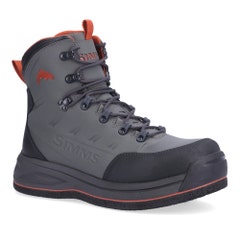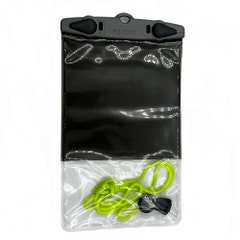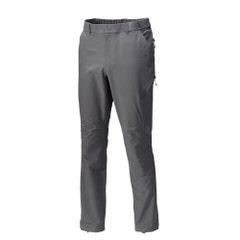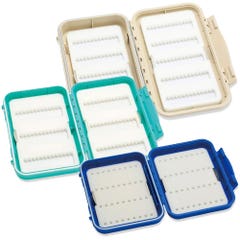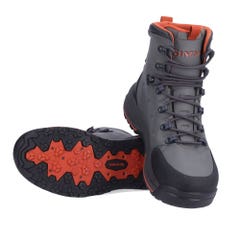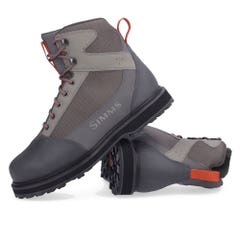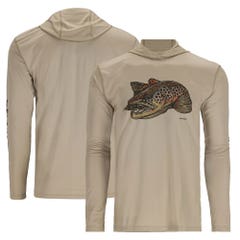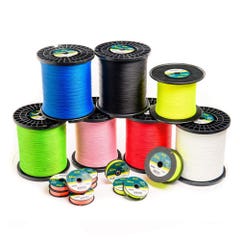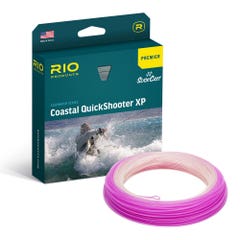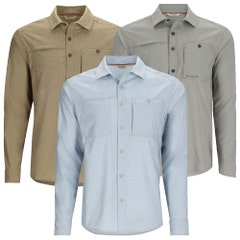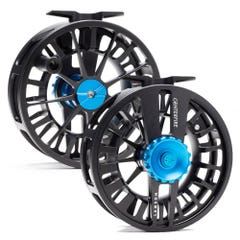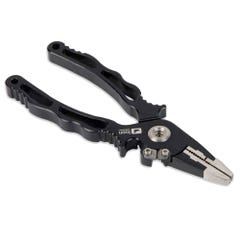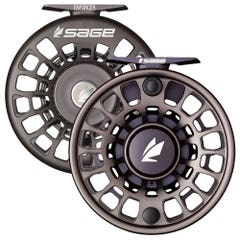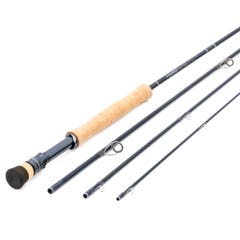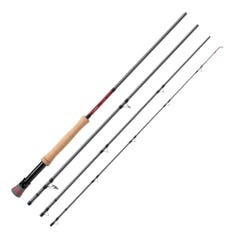Twenty years ago, bass were regarded as a fringe fish, perhaps even a ‘trash fish’, to coin a phrase from across the pond. Not so anymore. Instead this exciting game species is well and truly on the map, targeted by light tackle lure anglers, a technique which has experienced huge growth and development in the last decade, and fly anglers alike.
But where do you go and what tackle do you need to chase this great summer holiday fish, a species that could send adrenaline coursing through your veins while the kids are still sleeping off the long days of buckets and spades?
Read on to discover how simple it is to experience the exhilarating world of the European bass!
Suggested bass tackle
The great news is that modern day bass fishing tackle is lightweight and highly mobile. Wet wading can be enjoyed in the right circumstances although on most occasions, even in the height of summer, a pair of breathable chest waders is highly advisable.Think safety too. Swells, deep water and unpredictable currents can cause unnecessary tragedy, so a quality automatic lifejacket is an essential. Load a first aid kit, plenty of water, some energy snacks and a bottle of sunscreen into a waterproof backpack, such as the Patagonia Stormfront, and you are ready for the fishing equipment.
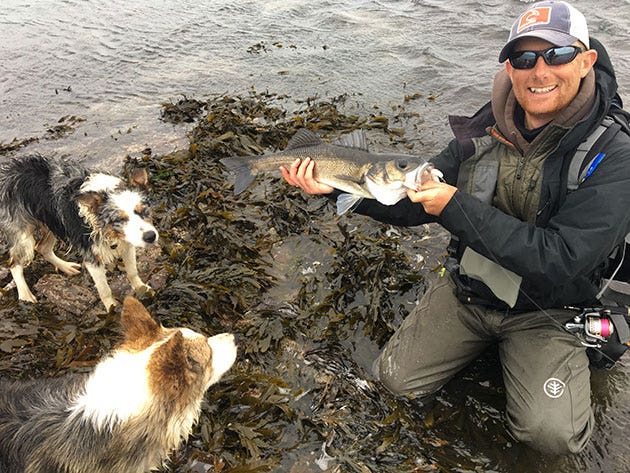
If you are new to saltwater fishing, or your fly casting is a little rusty, (more about fly fishing for bass in a future blog) then an 8’0” to 9’0” lure fishing rod capable of throwing lures between 10g to 30g is ideal. Load up a 2500 to 4000 size fixed spool reel such as the Shimano Stradic with some high quality braid and there is not much more to carry, other than the lures and a few basic accessories. nto the braid goes a fluorocarbon leader of around 2ft, attached with an Albright Knot, formed using doubled braid and finished off with a lure clip.
Lures themselves can be a minefield, so I would advise my approach to stocking a fly box: less is more! Aim to carry a hard lure which runs at around 1’ to 2’ depth in a couple of colours, a surface lure which creates plenty of disturbance and from an early stage it pays to experiment with soft plastic lures such as the Fiiish Black Minnow. This ground-breaking product can be cast and straight wound, or bumped along in the current, a deadly method which has fooled many bass (and numerous other species) since they exploded on to the scene a few years ago.
Organise the above into an inexpensive container such as the Snowbee Lure Box and carry a set of pliers to debarb hooks (barbed trebles are dangerous and damage fish unnecessarily), unhook fish and cut line. Some expensive pliers incorporate a braid cutting tool, but it is also possible to purchase value for money braid scissors if you are bass fishing on a budget. Spare fluorocarbon leader, a microfibre cloth or two (perfect for sunglasses, camera lenses and wet hands) and a set of studded wading boots complete the outfit. Its time to go fishing!
Where do I find bass?
Present throughout the UK, Ireland and European coastal regions, bass may no longer be as plentiful as they were 30 years ago when Mike Ladle and Alan Vaughan published the widely acclaimed ‘Hooked on Bass’ (a classic well worth reading), but the chances are that a summer holiday near the coast will put you within striking distance of the kind of ground required. From Brighton to Barnstaple there are opportunities to catch bass!Estuaries – Great for beginners!
Bass are frequently found in areas where freshwater meets the salt. If possible, do some research online prior to your trip and learn a few basics regarding spring and neap tides.In the past I fished my local estuary during very high tidal changes known as ‘springs’, but nowadays I am looking for steadily building tides, falling tides around changing moon phases and even relatively small tidal changes known as ‘neaps’. These conditions often mean less suspended weed to foul your lure and they provide predatory bass with time to hunt amongst the gullies and mussel beds so often present in estuarine areas. If possible, keep a basic diary recording tide, wind and weather conditions and over time a pattern will emerge for your chosen location.
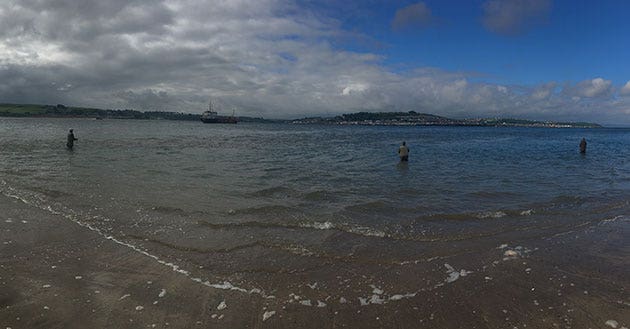 Estuary Bass Fishing
Estuary Bass FishingEarly mornings are a great time to be out, especially while the family is asleep, and an ebbing tide provides the opportunity to fish without the worry of being cut off by rising water. Even so, be very aware of strong currents and make a note of when the tide will change and begin to flood. This can be a very good time to be fishing but it is easy to become so engrossed (especially when the bass are biting!) that the water covers the route back to terra firma.
Make casts along gullies and across them, while searching for fish-attracting weed beds. These features offer shelter for the crabs, shrimp, sandeels and other fish upon which the bass feast and in which they camouflage themselves to unleash a sudden surprise attack that can take place in surprisingly shallow water. Always fish your lure right up to the very last few cranks of the reel!
Rock Marks – A more difficult proposition
Boulder strewn beaches are an exciting location to fish for bass but are a far more difficult proposition than an estuary, especially if your time is limited by family holiday commitments. Locating successful marks can take years of dedication and meticulous note taking!However, online research and local tackle shops offer a source of information regarding popular locations such as Kimmeridge in Dorset and Morte Point in North Devon. Shore based bass guides such as Marc Cowling in South Devon are also becoming more commonplace, offering access to secluded rock fishing in exchange for a fee.
A good guide will ensure you are safe, they hold insurance, carry equipment and teach you how, when and where to fish. If your guide’s approach is to drop you off on a rock while he disappears to fish, then don’t pay! Internet research and word of mouth will reveal the guides who are worth their fee with social media pages full of happy clients and reviews that not only boast of the fish caught but their ability to entertain and inform.
If your pocket, or time, does not justify hiring a guide then refer to books, websites (www.henry-gilbey.com is inspirational) and when you visit a rock mark always observe your surroundings. Find features as per the estuaries and pay attention to pinnacles which are often surrounded by the fizzed-up water bass crave. The presence of bait is also a good sign, especially when gulls begin to dive, often signifying bass attacking from below. Work a lure through these areas and you will almost certainly be rewarded, but act fast, bait and bass move quickly, offering fleeting opportunities to benefit from such an obvious sign of their presence.
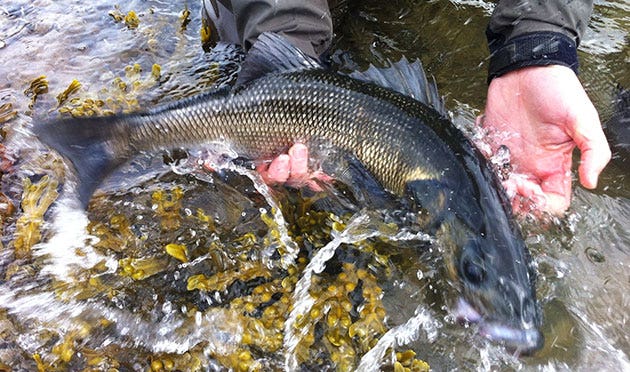 Releasing a bass in the estuary
Releasing a bass in the estuaryWhat lure do I start with?
As mentioned previously, there are a great deal of confusing designs to choose from. For some simple fishing, try a weedless soft plastic such as the Fiish Black Minnow to curb losses caused by the rough ground bass frequent, cast out and straight wind.If you would like to experiment with a hard lure such as the Rapala Saltwater Maxrap, read the packaging, work out the depth it is designed to ride at (and conditions it is suitable for) and experiment over some clean ground, watching how the lure behaves during retrieval.
For the ultimate adrenaline rush, fish the surface with lures such as the Rapala Saltwater Skitter Pop and be ready for explosive takes! Often the best way to gain the most from topwater lures is to raise the rod tip and gently twitch while winding.
Catch and release is compulsory during 2018
Lure fishing for bass is a great way to introduce children to sea fishing, a brilliant getaway for parents and the sport itself is free, no licences or permits required. However, such is the pressure upon the species in recent years, that a moratorium has been placed on the taking of bass for the pot - or Barbeque. I wish you luck in your pursuit of this fantastic game fish but please observe the rules and release all bass caught, preferably utilising barbless hooks.It is true that the commercial trawling and overfishing of bass have largely caused the problems experienced today but hopefully in future years the government backed Marine Management Organisation will achieve their manifesto to regulate marine activities in a sustainable way and return stocks to the levels enjoyed by Messrs Ladle and Vaughan thirty years ago. See the Marine Management Organisation for further information.
River to Rock with Nick Hart
If you would like to experience brilliant bass fishing along the rocky north Devon coast and combine it with some amazing West Country small stream trout fishing then don’t forget to check out Nick’s famous ‘River to Rock’ courses. The courses are sold out for 2018, but drop Nick an email and he will put you on the advance list for 2019.Nick Hart is a bass fishing fanatic and wants everyone to discover this fabulous game species, check out this 'bass fishing for beginners' guide and make bass one of your summer targets.
Twenty years ago bass were regarded as a fringe fish, not so anymore, this exciting game species is now well and truly on the map and is targeted by lure and fly anglers alike. But where do you go and what tackle do you need to chase this great summer holiday fish, a species that will send adrenaline coursing through your veins while the kids are still sleeping off the long days of buckets and spades?
Read on to discover how simple it is to experience the exhilarating world of the European bass!
Suggested bass fishing tackle
The great news is that modern day bass fishing tackle is lightweight and the fishing is highly mobile. Wet wading can be enjoyed in the right circumstances although on most occasions, even in the height of summer, a pair of breathable chest waders is advisable.
Think safety too. Swells, deep water and unpredictable currents can cause unnecessary tragedy, so a quality automatic lifejacket is an essential. Load a first aid kit, plenty of water, some energy snacks and a bottle of sunscreen into a waterproof backpack, such as the Patagonia Stormfront, and you are ready for the fishing equipment proper.


If you are new to saltwater fishing, or your fly casting is a little rusty, then an 8’0” to 9’0” lure fishing rod capable of throwing lures between 10g to 30g is ideal. Load up a 2500 to 4000 size fixed spool reel such as the Shimano Stradic with some high quality braided line and there is not much more to carry, other than the lures and a few basic accessories. Onto the braid goes a fluorocarbon leader of around 2ft, attached with an Albright Knot, formed using doubled braid, and finished off with a lure clip.
Lures themselves can be a minefield, so I would advise my approach to stocking a fly box: less is more! Aim to carry a hard lure which runs at around 1’ to 2’ depth in a couple of colours, a surface lure which creates plenty of disturbance and a soft plastic lure such as the Fiiish Black Minnow. This ground-breaking lure can be cast and straight wound, or bumped along in the current – a deadly method which has fooled many bass (and numerous other species) since the pattern exploded onto the scene a few years ago.
Organise the above into an inexpensive container such as the Abu Garcia Lure Box and carry a set of pliers to debarb hooks (barbed trebles are dangerous and can damage fish unnecessarily), unhook fish and cut line. Some pliers incorporate a braid cutting tool, but it is also possible to purchase value–for–money braid scissors if you are bassing on a budget. Spare fluorocarbon leader, a microfibre cloth or two (perfect for sunglasses, camera lenses and wet hands) and a set of studded wading boots complete the outfit. It‘s time to go fishing!
Where do I find bass?
Present throughout the UK, Ireland and European coastal regions, bass may no longer be as plentiful as they were 30 years ago when Mike Ladle and Alan Vaughan published the widely acclaimed ‘Hooked on Bass’ (a classic well worth reading), but the chances are that a summer holiday near the coast will put you within striking distance of the kind of ground required. From Brighton to Barnstaple there are opportunities to catch bass!
Estuary bass fishing – great for beginners
Bass are frequently found in areas where freshwater meets the salt. If possible, do some research online prior to your trip and learn a few basics regarding spring and neap tides.
In the past I fished my local estuary during very high tidal changes known as ‘springs’, but nowadays I am looking for steadily building tides, falling tides around changing moon phases and even relatively small tidal changes known as ‘neaps’. These conditions often mean less suspended weed to foul your lure and they provide predatory bass with time to hunt amongst the gullies and mussel beds often present in estuarine areas. If possible, keep a basic diary recording tide, wind and weather conditions and over time a pattern will emerge for your chosen location.
 Estuary Bass Fishing
Estuary Bass FishingEarly mornings are a great time to be out, especially while the family is asleep, and an ebbing tide provides the opportunity to fish without the worry of being cut off by rising water. Even so, be aware of strong currents and make a note of when the tide will change and begin to flood. This can be a very good time to be fishing but it is easy to become so engrossed (especially when the bass are biting!) that the water covers the route back to terra firma.
Make casts along gullies and across them, while searching for fish-attracting weed beds. These features offer shelter for the crabs, shrimp, sandeels and other fish upon which the bass feast and are areas in which they camouflage themselves to unleash surprise attacks on their prey, often in surprisingly shallow water, so always fish your lure right up to the very last few cranks of the reel!
Rock marks – a more difficult proposition
Boulder strewn beaches are an exciting location to fish for bass too but are far more difficult than an estuary, especially if your time is limited by family holiday commitments, because locating successful marks can take years of dedication and meticulous note taking!
However, online research and local tackle shops offer a source of information regarding popular locations such as Kimmeridge in Dorset and Morte Point in North Devon. Shore–based bass guides are also becoming more commonplace, offering access to secluded rock fishing in exchange for a fee.
A good guide will ensure you are safe, they hold insurance, carry equipment and teach you how, when and where to fish. If your guide’s approach is to drop you off on a rock while he disappears to fish, then don’t pay! Internet research and word of mouth will always reveal the guides who are worth their fee with social media pages full of happy clients and reviews that not only boast of the fish caught but their ability to entertain and inform.
If your pocket, or time, does not justify hiring a guide then refer to books, websites (www.henry-gilbey.com is inspirational) and when you visit a rock mark always observe your surroundings. Find features as per the estuaries and pay attention to pinnacles which are often surrounded by the fizzed-up water bass crave. The presence of bait is also a good sign, especially when gulls begin to dive, often signifying bass attacking from below. Work a lure through these areas and you will almost certainly be rewarded, but act fast because both bait and bass move quickly, offering fleeting opportunities to benefit from such an obvious sign of their presence.
 Releasing a bass in the estuary
Releasing a bass in the estuaryWhat lure do I start with?
As mentioned previously, there are a great deal of confusing designs to choose from. For simple fishing, try a weedless soft plastic such as the Fiish Black Minnow to curb losses caused by the rough ground bass love to frequent and just cast out and straight wind.
If you would like to experiment with a hard lure such as the Rapala Saltwater Maxrap, read the packaging, work out the depth it is designed to ride at (and conditions it is suitable for) and experiment over clean ground, watching how the lure behaves during retrieval.
For the ultimate adrenaline rush, fish the surface with lures such as the Rapala Saltwater Skitter Pop and be ready for explosive takes! Often the best way to gain the most from topwater lures is to raise the rod tip and gently twitch while winding.
Lure fishing for bass is a great way to introduce children to sea fishing, it is a brilliant getaway for parents and the sport itself is free, with no licences or permits required. But do ensure you follow the current regulations on taking fish, follow the rules and if at all possible release all bass caught, preferably using barbless hooks.
BASS
If you want to take your bass fishing seriously, Farlows recommends you join the Bass Anglers' Sportfishing Society (BASS), an organisation which campaigns passionately for the species and provides information of tackle, techniques and conservation for all seafishers who live the species, or would like to get to know it better.
To find out more about the limits and restrictions, visit the Government Bass Fishing Guidelines website.
Top Tips Recap
LOOK FOR STRUCTURE
Bass love cover – as do the prey species they are looking to ambush – so look out for any sort of structure in the water from rocks and weed to sandbanks, gullies and broken ground.
ESTUARIES
Bass fishing is not all about the open sea. Like mullet, bass are well-adapted to life in estuaries and creeks too and you will find them a surprising distance from open water.
ROUGH WATER
Rough conditions will often produce better fishing – and bigger fish - as the conditions rip food items, such as sandeels, out of the sand and make ambushing prey species much easier.
TIMING
Low light levels give bass the edge over their prey so creep out at dawn and dusk to enjoy the best of the fishing. If you are on a family holiday you can be back with a lure-caught bass or two under your belt before you need to break out the buckets and spades for the kids!
TIDES
Much sea fishing revolves around checking out the tide tables and fishing the rising tide up to high water. Some bass marks will, by their very nature, fish best at high tide but many will not and you will find areas to fish effectively at all states of the tide.
LINES AND LEADERS
To connect with fish instantly, make sure you use a braided main line – 15 to 20lb is ideal - and couple it with a fluorocarbon leader.
LURE SELECTION
I find silvery or greenish lures most effective with shad or sandeel patterns always particularly successful. For hard lures look to Halco Roosta Poppers, Classic Minnows or Rapala Max Raps.
WORK IT
Vary your retrieve! Try some straight retrieves but also make sure you fan cast to maximise your coverage and throw in a bit of sink and draw too. Bass often work the shallows so don’t worry if you can’t cast a long distance – they can be under your feet!
SEE CLEARLY
A good pair of Polarising lenses are invaluable for all types of fishing, and lure fishing for bass is no exception. Like most of the team here at Farlows I recommend the Costa Sunglasses range.
BE SAFE
Finally, the last of my bass fishing tips. The sea can be an unforgiving environment, even in summer, so ensure you are dressed appropriately with rubber-soled boots to give a good grip on slippery shorelines. Check the tides to ensure you will not be cut off by rising water, carry a mobile phone and always let people know where you are heading.



